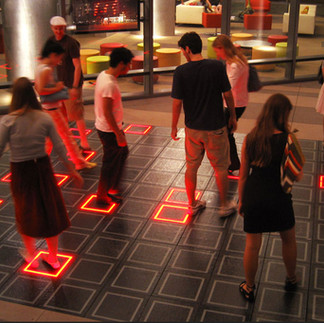Urban Street Lighting as an Essential Element of Urbanism
- Hanan Peretz
- Jan 26, 2023
- 3 min read

Urban street lighting plays a significant role in shaping the character and identity of a city. It helps to create a sense of place, enhance safety and security, and improve the overall quality of life for residents and visitors. However, the relationship between urban street lighting and urbanism goes beyond just aesthetics and functionality. It is also closely connected to issues of sustainability, accessibility, and social inclusion.
One of the key ways in which urban street lighting impacts urbanism is through its ability to enhance the visual appeal and attractiveness of a city. Well-designed lighting can highlight the architectural and cultural features of a city, creating a sense of place and identity. This is particularly important in urban areas where buildings and streets are densely packed, as lighting can help to create a sense of cohesiveness and unity.
Some examples of lighting in order to determine a city’s architectural and cultural identity:

Image 1: Urban Lighting Project by Luonnon Lyhdyt based on Lights Over Kruunuvuorenranta, Finland

Image 2: Urban Lighting Project by Luonnon Lyhdyt based on Lights Over Kruunuvuorenranta, Finland
In addition to its visual impact, urban street lighting also plays a crucial role in improving safety and security in urban areas. Adequate lighting can help to deter crime, reduce the risk of accidents, and make people feel more comfortable and secure when out and about at night. This is especially important in areas with high foot traffic, such as shopping districts and entertainment areas.
However, it is not just the quantity of lighting that is important, but also the quality and design of the lighting. Poorly designed lighting can create glare, shadows, and other visual distractions, which can have negative impacts on both safety and aesthetics. This is why it is essential that urban street lighting be carefully planned and designed to ensure that it meets the needs of the city and its residents.
One of the key challenges facing urban street lighting is the need to balance the various competing interests and concerns. For example, there is a growing recognition of the importance of energy efficiency and sustainability in urban lighting. This is particularly important in the context of climate change, as cities are major sources of greenhouse gas emissions. At the same time, however, there is also a need to ensure that lighting is sufficient to meet the needs of the city, including safety, security, and aesthetics.
To address these challenges, there are a number of recommendations that architects and urban planners should consider when designing and implementing urban street lighting. These include:
Focus on energy efficiency and sustainability: This means using LED lighting and other energy-efficient technologies, as well as designing lighting systems to minimize energy consumption and greenhouse gas emissions.

Image 3: LED Components
Consider the needs of all users: Urban lighting should be designed to meet the needs of all users, including pedestrians, cyclists, and motorists. This means providing adequate lighting, but also avoiding glare and other visual distractions.

Image 4: Cityscape UPC unveil upgraded street design tool – Edited to Highlight Urban Lighting
Plan for flexibility: Urban lighting should be designed to be flexible and adaptable, to allow for changes in the city over time. This could include using smart lighting systems that can be easily adjusted based on changing needs.

Image 5: Adaptive, Dynamic and Intelligent Lighting - LED Professional
Promote social inclusion: Urban lighting should be designed to promote social inclusion and accessibility, to ensure that all members of the community can use and enjoy the city safely and comfortably.
Image 6, 7 & 8: Electroland activated the entry area and facade of a Los Angeles apartment building with an interactive game (2007).
In conclusion, the relationship between urban street lighting and urbanism is complex and multifaceted. It involves a range of issues, including aesthetics, safety, sustainability, and accessibility. To ensure that urban lighting is effective and successful, it is essential that architects and urban planners consider these issues carefully and work to find a balance that meets the needs of all stakeholders.












Comments